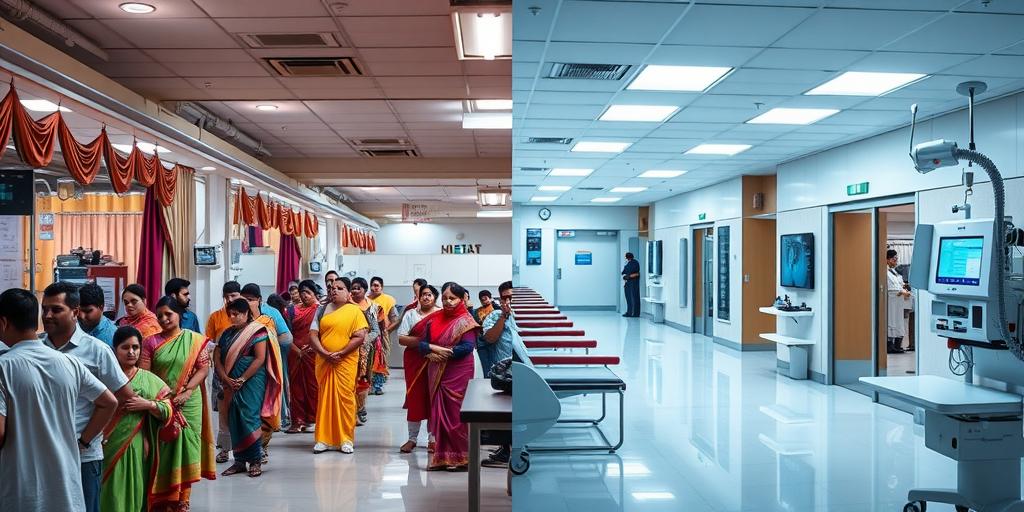Comparing Healthcare Systems: India vs. Developed Nations (2025)
India’s healthcare system presents a complex landscape when compared to those of developed nations. As of 2025, significant disparities remain in access, quality, and funding. This post provides an informative overview of these differences.
Healthcare Spending
India: Healthcare expenditure is significantly lower as a percentage of GDP compared to developed countries. Public spending is limited, leading to a greater reliance on out-of-pocket payments. According to a 2024 report by the World Bank, India spends approximately 3.5% of its GDP on healthcare, with a large portion coming directly from individuals.
Developed Nations: Countries like the United States, the United Kingdom, and Germany allocate a much larger proportion of their GDP to healthcare. The US, for instance, spends over 17% of its GDP, with a mix of public and private funding.
Infrastructure and Resources
India: Infrastructure challenges are prevalent, particularly in rural areas. There is a shortage of hospital beds, medical equipment, and healthcare professionals. The doctor-patient ratio is also significantly lower than in developed nations.
Developed Nations: Advanced infrastructure, state-of-the-art medical technology, and a higher density of healthcare professionals characterize these systems. Investment in research and development is also considerably higher.
Access to Healthcare
India: Access to healthcare is unevenly distributed. While urban centers have better facilities, rural populations often face barriers such as distance, lack of transportation, and affordability. Public health schemes like Ayushman Bharat aim to improve access for vulnerable populations, but challenges persist.
Developed Nations: Universal healthcare coverage is common, ensuring that all citizens have access to medical services, regardless of their socioeconomic status. Systems are designed to reduce financial barriers and provide comprehensive care.
Health Outcomes
India: Health outcomes, such as infant mortality rates and life expectancy, lag behind those of developed nations. Communicable diseases, maternal health issues, and malnutrition continue to be significant concerns.
Developed Nations: Higher life expectancy, lower infant mortality rates, and better management of chronic diseases are typical. Focus is placed on preventive care and early detection of illnesses.
Technology and Innovation
India: Digital health initiatives are growing, but adoption is still limited by infrastructure and awareness. Telemedicine and e-health services are gradually expanding to remote areas.
Developed Nations: Integration of advanced technologies like AI, big data analytics, and electronic health records is widespread, enhancing efficiency and quality of care. Telehealth is well-established and integrated into mainstream healthcare delivery.
Policy and Regulation
India: Healthcare regulation is evolving, with efforts to strengthen quality standards and patient safety. However, enforcement remains a challenge, and the regulatory framework is less comprehensive than in developed nations.
Developed Nations: Robust regulatory frameworks ensure quality of care, patient safety, and ethical practices. Healthcare policies are evidence-based and regularly updated to reflect advancements in medical science.
Conclusion
While India has made progress in improving its healthcare system, significant gaps remain when compared to developed nations. Addressing these disparities requires increased investment, improved infrastructure, better access, and stronger regulatory mechanisms. Bridging these gaps is crucial for achieving better health outcomes and ensuring equitable healthcare for all its citizens.
